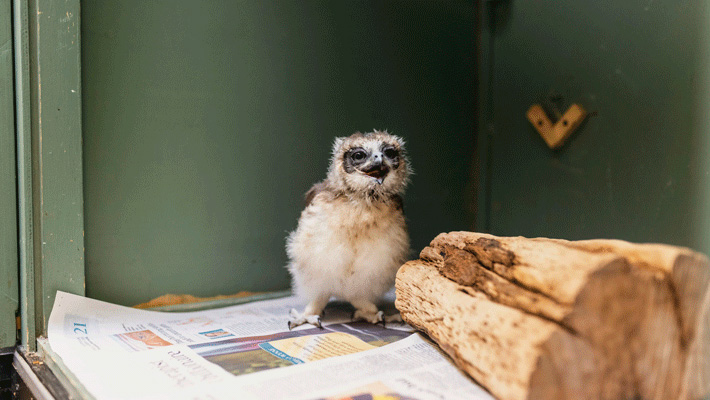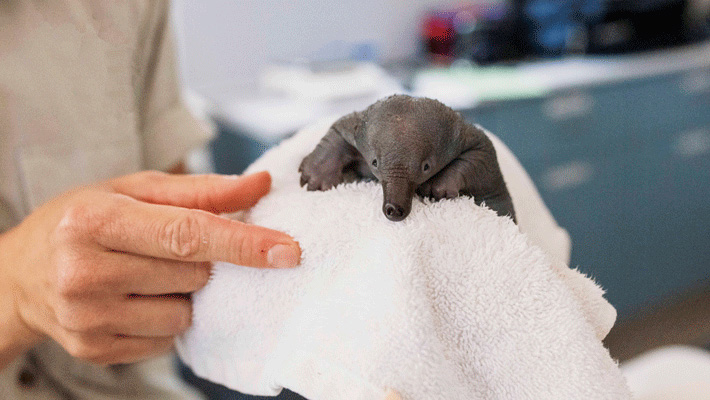Posted on 16th February 2022 by Media Relations
Eastern Australia is currently in the midst of a significant flood and storm event, impacting people, wildlife and our environment.
We've spoken to Taronga Wildlife Hospital team who have shared some vital tips for anyone who finds a native animal that has been displaced from these severe weather conditions:
Put your own safety first
Consider your own safety when approaching wildlife that may be injured. Be aware of ongoing danger from floodwaters and fallen trees and only attempt to rescue animals if it is safe to do so.
Be on the lookout
While it’s important to remain mindful of your own safety and not search directly for wildlife in impacted areas, as conditions ease, be on the lookout for wildlife who may be injured or in need of assistance.
Handle with care
An animal may be semi-conscious and may rouse when you touch it. To protect yourself, wear gloves or use a towel or T-shirt to pick it up.
Exercise caution
Avoid handling potentially dangerous animals, such as snakes, or animals that carry infectious diseases, like grey-headed flying foxes – these animals should only be handled by trained wildlife rescuers.
Transport
Transporting animals, even short distances, can be very stressful for them. Help them stay calm by placing them in a cardboard box lined with soft towels. The box should be well ventilated, with air holes in its sides. If you find more than one animal, keep them in separate boxes. Place the box on the back seat with lots of space around it, away from other passengers. Keep the car warm (around 26 degrees) and quiet – turn off the music, try not to talk loudly and leave your pets at home.

Seek expert assistance
Take the animal to a wildlife hospital, such as Taronga Wildlife Hospital, or give it to a Wildlife Rescue group as you can. If you cannot take it to a wildlife hospital immediately, keep it in a warm, quiet and dark place in your home off the floor and do not disturb it.
Keep your distance
Although they look cute, it’s important to remember native wildlife are not pets. It’s unlikely they are used to human interaction. They will be stressed by being handled and do not know you are helping them.
Be aware and observe
Take note of whether an animal was moving, lying down or limping away when you found it. These observations are very helpful to the vets and nurses examining the animal on arrival at the hospital and can aid in its treatment.
Do not offer the animal any food
Providing food for free-living native wildlife is generally not recommended as it can lead to serious, unintended harm. Additionally, if any animal needs treatment under anaesthetic it will need to have an empty stomach. If you must keep the animal overnight, you can leave a small shallow dish of water in its box but don’t force it to drink.
Offer respite
If an animal is not injured, it may be more appropriate to provide temporary respite or shelter to allow them to dry out and recuperate. Try to keep your distance from wildlife, refrain from offering food and keep household pets secure.

With the impacts of climate change and habitat loss being felt across Australia with increasing frequency, Taronga’s expertise will sadly be called upon more and more often to save some of our nations most threatened wildlife.
Taronga’s two Wildlife Hospitals provide vital emergency assistance to all kinds of sick and injured native animals. With your help we can provide them with the best possible care.